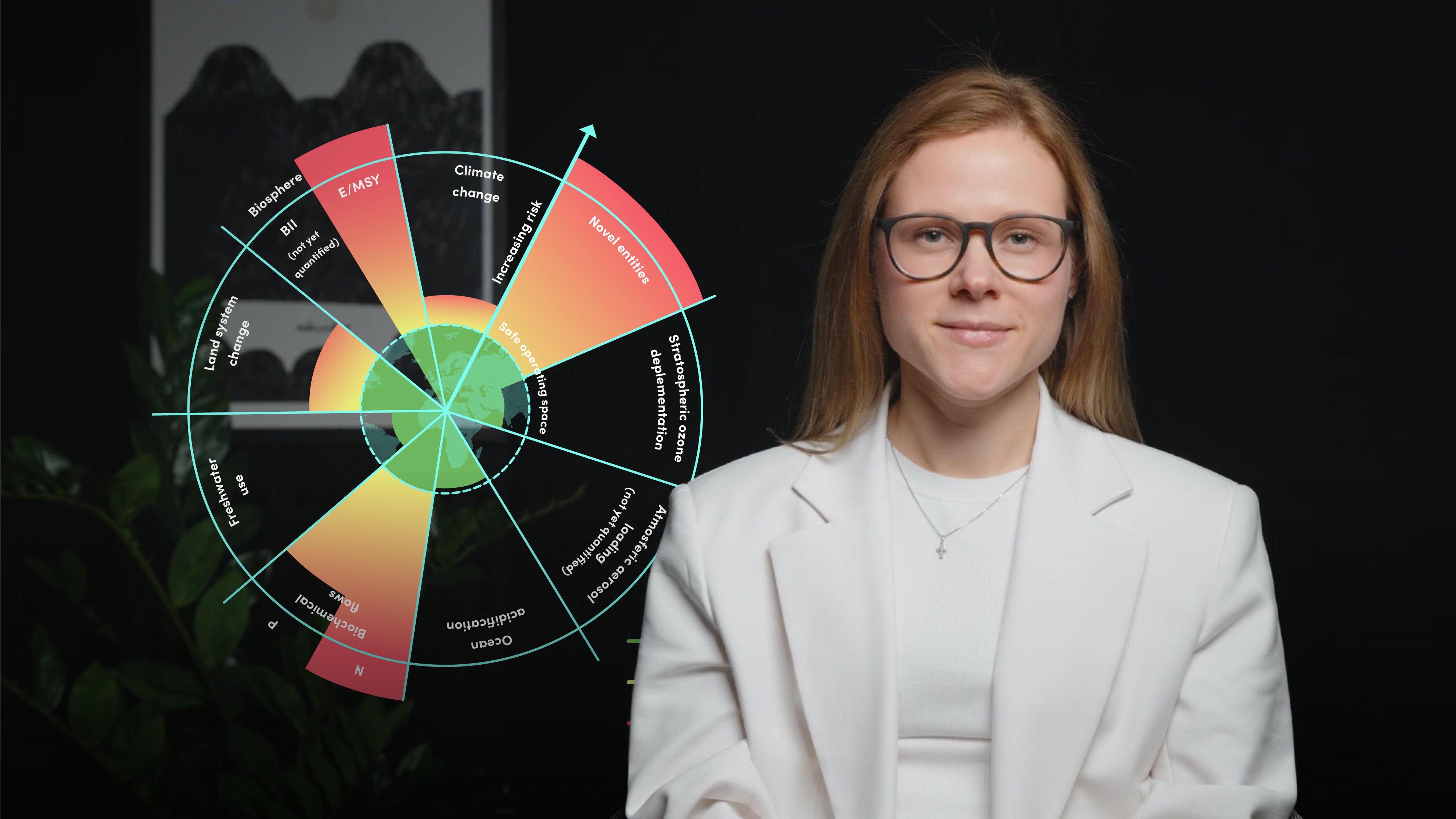
Planetary Boundaries

Elena Doms
15 years: Climate Advisor and Advocate
In this video, Elena explains the causes and consequences of rapidly rising emissions from burning fossil fuels, leading to the warming of our climate. She also introduces the concept of planetary boundaries and emphasizes the need to cut emissions by 50% by 2030 and reach net-zero by 2050 to limit global warming to 1.5 degrees. The video calls for urgent action to address the climate crisis and preserve a habitable planet for future generations.

In this video, Elena explains the causes and consequences of rapidly rising emissions from burning fossil fuels, leading to the warming of our climate. She also introduces the concept of planetary boundaries and emphasizes the need to cut emissions by 50% by 2030 and reach net-zero by 2050 to limit global warming to 1.5 degrees. The video calls for urgent action to address the climate crisis and preserve a habitable planet for future generations.
Subscribe to watch
Access this and all of the content on our platform by signing up for a 7-day free trial.

Planetary Boundaries
9 mins 38 secs
Key learning objectives:
Outline the importance of addressing climate change and its impact on the planet's systems
Understand the concept of planetary boundaries and how it can guide us towards a sustainable future
Outline how we might achieve a 1.5℃ emissions pathway
Overview:
In 2015, almost 200 countries signed The Paris Agreement, a legally-binding international treaty with the goal of limiting global warming to well below 2℃, preferably 1.5℃. The concept of planetary boundaries was introduced in 2009 and refers to the environmental limits in which humanity can operate safely and thrive. Seven out of nine planetary boundaries have already been crossed, including climate change, intact nature, managed nature, fertilisers, water, novel substances, and aerosol loading. To achieve a 1.5℃ emissions pathway, we must stop fossil fuels and transition to renewable energy, engage in nature restoration and regenerative agriculture, and implement emissions removal through carbon capture and storage. According to the IPCC Sixth Assessment Report, all these steps are necessary to reach net-zero emissions.
Subscribe to watch
Access this and all of the content on our platform by signing up for a 7-day free trial.
Why is it important to address climate change?
Climate change is an urgent issue as our activities are causing emissions to rise, oceans to acidify, forests to disappear, and soils to degrade. The Earth system is trending upwards while the ozone layer is the only global success story. Our atmosphere is thin and we are putting 160 million tonnes of CO2 in it every day, trapping enormous amounts of heat. Carbon sinks like plants, soils, and oceans absorb 40% of extra CO2 emissions, but nature has its limits. We must reduce emissions as soon as possible and bring accumulated ones down to stabilise CO2 concentrations.
What are planetary boundaries?
The planetary boundaries are the environmental limits that allow humanity to operate safely and thrive. These boundaries define the limits of the Earth system and are aimed at protecting society, the global economy, nature, and our well-being. There are nine planetary boundaries, and according to research, we have already crossed seven of them. The boundaries are: climate change, intact nature or biodiversity, managed nature or land use, fertilisers nitrogen and phosphorus, aerosol loading or air pollution, freshwater change, novel substances that include chemical and plastic pollution, ocean acidification, and ozone layer depletion. To address the problem, we need to focus on bringing back all seven boundaries within a safe zone by taking appropriate measures like reducing CO2 emissions, protecting nature and water, and controlling the use of fertilisers and air pollutants.
How can we achieve a 1.5℃ emissions pathway?
The urgency to address climate change is evident as our emissions continue to rise. According to the UN Intergovernmental Panel on Climate Change, we must reduce our emissions by 50% by 2030 and achieve net-zero globally by 2050. We can achieve this by stopping the use of fossil fuels, transitioning to renewable energy, and implementing nature restoration and regenerative agriculture to transform carbon emitters into carbon sinks.
There are many transparency tools available, such as Climate Trace and NASA, to monitor and identify emissions sources. The International Energy Agency's roadmap outlines the specific steps to be taken to achieve the transition to renewable energy by 2050. The time to act is now, and we must take immediate and drastic measures to address climate change.
Subscribe to watch
Access this and all of the content on our platform by signing up for a 7-day free trial.

Elena Doms
There are no available Videos from "Elena Doms"


























